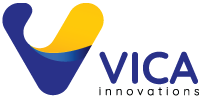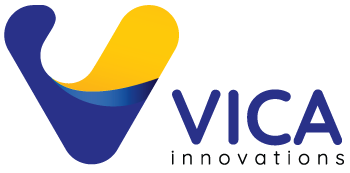As a business grows, so does the complexity of its financial landscape. One of the most crucial decisions in this growth phase is selecting the right financial reporting framework. This choice can significantly impact financial transparency, compliance, and the trust of stakeholders.
In this blog, we will explore the importance of choosing an appropriate financial reporting framework—whether it be the Accounting Standards for Private Enterprises (ASPE), International Financial Reporting Standards (IFRS), or Generally Accepted Accounting Principles in the United States (US GAAP). We will also provide guidance on making the right choice based on your business’s specific needs and goals.
The Importance of Choosing the Right Financial Reporting Framework
1. Financial Transparency
- Accuracy and Consistency: A suitable financial reporting framework ensures that financial statements are accurate and consistent, which is critical for internal decision-making and external assessments.
- Stakeholder Confidence: Transparent and reliable financial reports build confidence among investors, creditors, and other stakeholders, fostering trust and potentially leading to better financing terms and investment opportunities.
2. Regulatory Compliance
- Legal Requirements: Different jurisdictions have varying legal requirements for financial reporting. Adhering to these requirements is crucial to avoid legal penalties and sanctions.
- Audit and Review: Choosing a recognized framework facilitates smoother audits and reviews, ensuring that financial statements are scrutinized under widely accepted standards.
3. Trust of Stakeholders
- Investor Relations: Investors rely heavily on financial reports to make informed decisions. A robust framework provides the clarity and detail needed to attract and retain investors.
- Customer and Supplier Confidence: Transparency in financial reporting can enhance the trust of customers and suppliers, leading to stronger business relationships.
Overview of Financial Reporting Frameworks
1. Accounting Standards for Private Enterprises (ASPE)
- Target Audience: Small to medium-sized private enterprises primarily in Canada.
- Characteristics: ASPE is less complex and less costly to implement compared to IFRS and US GAAP. It is tailored to the needs of private businesses with fewer disclosure requirements.
- Benefits: Lower compliance costs, simplified reporting, and a focus on the specific needs of private enterprises.
2. International Financial Reporting Standards (IFRS)
- Target Audience: Public companies and large private entities operating internationally.
- Characteristics: IFRS is a globally recognized framework that facilitates comparability across international borders. It involves comprehensive disclosures and detailed financial reporting.
- Benefits: Enhanced global comparability, increased transparency, and attractiveness to international investors.
3. Generally Accepted Accounting Principles in the United States (US GAAP)
- Target Audience: Public companies and large private entities in the United States.
- Characteristics: US GAAP is known for its detailed rules-based approach, providing extensive guidelines for various accounting scenarios.
- Benefits: Strong regulatory framework, detailed guidance on complex transactions, and acceptance by US investors and regulators.
Making the Right Choice: Factors to Consider
1. Business Size and Complexity
- Small to Medium-Sized Enterprises (SMEs): ASPE might be the best choice for SMEs in Canada due to its simplicity and cost-effectiveness.
- Large Enterprises and Multinationals: IFRS or US GAAP may be more appropriate due to their comprehensive nature and acceptance in global markets.
2. Regulatory Environment
- Local vs. International Operations: Consider the jurisdictions in which your business operates. If you have significant international operations, IFRS might be necessary.
- Industry Requirements: Certain industries may have specific requirements that favor one framework over another.
3. Stakeholder Needs
- Investor Expectations: If you aim to attract international investors, IFRS could be beneficial. For US-based investors, US GAAP might be preferred.
- Banking and Financing: Some lenders may require financial statements prepared under a specific framework.
4. Future Goals
- Going Public: If you plan to go public, consider the requirements of your target stock exchange (e.g., IFRS for most global exchanges, US GAAP for US exchanges).
- Expansion Plans: For international expansion, IFRS may offer the most flexibility and acceptance.
Choosing the right financial reporting framework is a pivotal decision for any growing business. It affects financial transparency, compliance, and stakeholder trust, ultimately influencing the company’s growth trajectory.
By carefully considering the size and complexity of your business, the regulatory environment, stakeholder needs, and future goals, you can select the framework that best aligns with your business strategy. Whether it is ASPE, IFRS, or US GAAP, making an informed choice will set the foundation for financial success and sustainable growth.
Key Takeaways
- Evaluate Your Business Needs: Understand the specific requirements of your business and stakeholders.
- Consider the Regulatory Landscape: Align your choice with the legal and regulatory standards of your operating regions.
- Plan for the Future: Ensure the framework you choose supports your long-term business goals and growth plans.
- Seek Professional Advice: Consult with financial advisors or accountants to make an informed decision.
By selecting the right financial reporting framework, you not only ensure compliance and transparency but also build a solid foundation of trust and reliability that will support your business’s growth and success.
Ready to revolutionize your financial reporting? Discover how Vica Innovations can support your growth. Visit us at vicainnovations.com to learn more.





